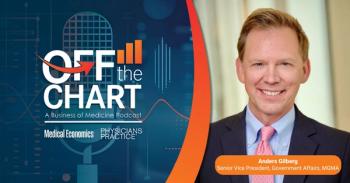
Is Your PA or NP Putting You at Risk of Malpractice?
PAs and NPs can be great assets to practices, but physicians need to take proper precautions. Here are three liability coverage must-haves.
More physicians than ever are including nonphysician providers in their practices - and for good reason. Smart use of PAs and NPs can improve patient access to care and increase physician time with patients, thereby improving patient satisfaction. What’s more, while the total number of physicians in the U.S. is declining, PAs and NPs are experiencing record-breaking growth within the profession. More than 250,000 practice in hospitals, clinics, and medical offices today.
Still, there are critical issues for physicians in private practices to consider when working with nonphysician providers. Specifically, owners or managers of practices must ensure that the practice has solid protection from liability claims - whether due to clinical errors, oversights, or even a slip off the exam table (and these things do happen).
Many physicians are surprised to learn that they can be held liable even if they have no contact with a nonphysician provider's patient. This type of vicarious liability simply means you are responsible for the actions of those in your charge. It assigns responsibility to the person who has a legal relationship with the person who caused the damage.
If you have an employed nonphysician provider, or even if you have hired that PA or NP as an independent contractor, their mistake is your mistake.
While it is important to be aware of your risk, you can rest much easier knowing you’ve addressed it. An essential step is to ensure you and you nonphysician providers have full professional liability protection.
If you contract with nonphysician providers:
1. Check the contract for hold-harmless language. It should be bilateral. In other words, you should each be responsible for what you do and not for what the other person does. Unless an action was done under your explicit direction, you can’t be held vicariously liable if you have a hold-harmless clause. This is a critical type of coverage if you contract with nonphysician providers, as your liability insurer will not cover you for liability you assume by contract.
2. Require proof of insurance from the nonphysician provider. He should provide you a certificate of insurance. Make sure the limits of liability are adequate and similar or the same as what you have. Make sure it is for professional liability insurance and for his profession.
If you employ nonphysician providers:
1. To avoid gaps in coverage, have the provider covered under your practice policy. You will want her named separately on the policy with her own limits of liability. As she assumes more responsibility and visibility in the practice, she has more risk. If a physician and an employed nonphysician provider were both named in a lawsuit and if they were sharing a limit, that limit would possibly be inadequate protection. (Note, ancillary staff such as nurses and technicians does not need separate limits, and they are typically covered under the limit assigned to the corporate entity.)
2. Ensure the policy you choose is offered by a reputable carrier, rated at least "A" or above, so if there ever is a claim, you will be covered.
In both circumstances (whether you contract with or employ nonphysician providers) you should take steps to educate them on their roles in managing risk. One of the most common allegations plaintiff attorneys will lodge is “inappropriate supervision.” Therefore, you should have clear policies and procedures for the roles and responsibilities of your PAs and NPs. Update and communicate those guidelines frequently, and fully document those policies and implementation activities.
To further protect your practice, look for a broker that can help provide you with additional insights and that has the resources to help you with education and risk management.
The current physician shortage and increasing demand for healthcare services will continue to increase demand for PAs and NPs. Physicians need the expertise and bandwidth they provide. Make sure you and your practice are covered for current and future incorporation of these important practitioners.
Newsletter
Optimize your practice with the Physicians Practice newsletter, offering management pearls, leadership tips, and business strategies tailored for practice administrators and physicians of any specialty.









